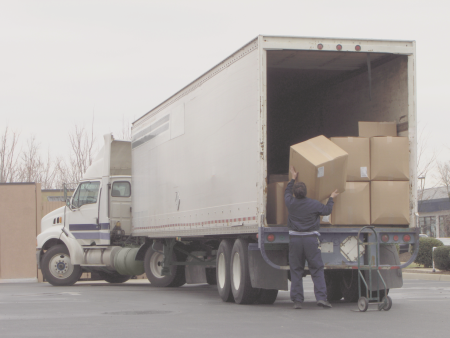As the logistics industry continues to evolve, businesses should understand the fundamental differences between LTL and FTL and how they can impact your shipping operations.
In this blog, we will explore the pros and cons of each shipping method, the scenarios where one is more suitable than the other, and how to determine which option is best for your business needs.
LTL Vs. FTL: Shipment Size, Pricing, and Handling
LTL (less than truckload) shipping is used when the shipment is too large for parcel carriers but too small for a full truck. It is typically used for shipments between 150 and 15,000 pounds.
LTL carriers merge multiple LTL shipments from different businesses onto one truck to optimize shipping costs. They charge based on the weight and dimensions of the shipment, as well as the distance between the origin and destination.
FTL (full truckload) shipping, on the other hand, is used when a single business needs to ship a large number of goods that require an entire trailer. It is typically used for shipments over 15,000 pounds.
FTL carriers charge based on the distance and type of goods being shipped. FTL shipping is more expensive than LTL shipping, but it can be cheaper for large shipments.
Since LTL carriers stuff shipments from different businesses, they are more susceptible to damage because they are handled more frequently. Meanwhile, FTL shipments require less handling because they occupy an entire trailer. They are also less susceptible to damage because they are not handled as much.
Shipping Considerations
Here are some of the things to keep in mind when deciding between LTL and FTL shipping:
- Freight Size and Weight
- Transit Time
- Cost
- Freight Class
- Special Handling
- Pickup and Delivery Requirements
With these, you can make an informed decision about whether LTL or FTL shipping is the right choice for your business needs.
Impact on Supply Chain Efficiency
If you choose LTL shipping for a small shipment, you can reduce costs, avoid unnecessary transport, and optimize your fleet utilization. On the other hand, if you choose FTL shipping for a large shipment, you can avoid additional handling, reduce the number of stops, and develop better routing.
Impact on Customer Satisfaction
With LTL, customers may receive their orders faster and at a lower cost, resulting in higher customer satisfaction, repeat business, and improved brand reputation. Similarly, if you choose FTL for a large shipment, you can provide customers with the option of expedited delivery to increase customer satisfaction.
Environmental Factors
LTL shipping is generally more environmentally friendly than FTL shipping because it reduces the number of trucks on the road. Businesses can reduce their environmental impact by using more fuel-efficient trucks.
Emerging Trends
The logistics industry uses automation and robotics, the adoption of blockchain technology for supply chain management, and the use of artificial intelligence to maximize shipping routes.
Best Practices To Optimize LTL and FTL Shipping Needs
A good business owner knows how to properly optimize their LTL and FTL shipping needs. Here are some steps you can take:
- Plan ahead
- Consolidate shipments
- Use technology
- Choose the right carrier
- Monitor carrier performance
- Optimize packaging
- Track shipments
Always keep these factors in mind to ensure the proper shipment of your packages.
How Jansson Can Help
Jansson, an independent agent of Landstar, offers both LTL and FTL shipping, warehousing, and distribution services. Jansson works with businesses to analyze their shipping data and identify opportunities for cost savings and efficiency improvements.
Choose Jansson for your shipping needs today!





Comments are closed.